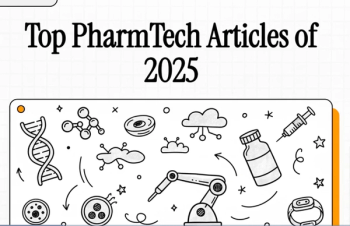
- Pharmaceutical Technology-02-02-2016
- Volume 40
- Issue 2
Preventing Film Coating Problems by Design
Common defects in tablet film coating can be minimized by effective design of the tablet core and the coating process.
Film coatings on pharmaceutical tablets provide a broad range of functionalities, and the coating formulation and process are complex, with many variables. Figure 1 shows the variables associated with a pan-coating process, for example. All of these factors can potentially influence critical quality attributes of the final coated product.
Film-coated products seem to exhibit more than their fair share of defects. Although many film-coating problems tend to be visual or cosmetic defects that may not negatively impact product efficacy, their existence detracts from the perception of overall product quality and may affect consumer/patient confidence. Many common problems with film-coated products and processes are understood and solutions have been discussed (1–4). Most of these problems can be avoided if a scientifically valid and proactive approach is taken when designing formulations and processes.
Generally speaking, the key elements of any film-coated product are formulation and design of the core (to which the coating is applied), the coating formulation, and the coating process. In many cases, all three of these elements, in combination, play a key role in the presence or absence of coating defects.
Problems associated with film-coated products may be classified as:
- Visual defects
- Issues associated with product functionality (e.g., drug release behavior)
- Concerns with product stability
- Factors affecting manufacturing costs.
Identifying visual defects (and the extent to which they occur) can be relatively simple, and there are proactive approaches to avoiding them. Product functionality and stability, however, present a more complex situation, because the existence of the problem is typically not apparent until after the coating process has been concluded, and sample selection for testing purposes often effectively precludes assessing the magnitude of the problem.
Preventing problems is better than troubleshooting afterwards, because regulatory issues (e.g., after a product has been commercialized) may limit troubleshooting solutions. Indeed, the intent of quality-by-design practices is to investigate all aspects of the product development process and identify critical quality attributes and critical process parameters. This article provides an overview of issues that should be considered when designing film-coated products. Pan coating of tablets is used as an example, but many of the assertions are relevant to film coating in general.
Core design
Film-coating processes are stressful, both in terms of the mechanical attrition that takes place as well as the environmental conditions (temperature and humidity) within the coating process to which the product being coated will be exposed. These stress factors become more substantial when the coating process is scaled up from the laboratory to full-scale production, because the product exposure time to such conditions increases.
Thus, a sensible approach uses a core material that is resistant to such stressful conditions. In the case of tablets, designing cores that have exceptional mechanical properties (in terms of both mechanical strength and friability characteristics) is essential. What is not clear, however, is what defines exceptional mechanical properties. The common practice is to define mechanical strength in terms of a tablet-breaking force, the required minimum value of which increases with increasing tablet size. For this reason, use of low friability values becomes a good surrogate to help define tablet robustness. Regardless of tablet size, tablets should possess friability values of < 0.1% if they are to be successfully film coated on the manufacturing scale.
Examples of common defects that can be eliminated by effective core design are summarized in Table I.
Coating formulation design
The mechanical properties of the coating formulation are equally important to those of the core, because both are subjected to the same stresses. To some extent, the mechanical behavior of the coating will be augmented by that of the core, because the core essentially acts as a scaffold for the coating. Key attributes of the coating formulation that, if suitably optimized, can contribute to the quality attributes of the final product are discussed as follows.
Mechanical strength (tensile strength) of the coating. This attribute can effectively be used to prevent edge chipping and cracking of the coating, which becomes much more serious when the applied coating has a functional purpose, such as protecting the core from environmental moisture or modifying drug-release characteristics (e.g., delayed release and extended release products).
Coating flexibility (often defined in terms of elastic modulus). Coatings that are flexible can offset edge chipping and are less likely to suffer from logo bridging problems. Flexible coatings can more easily accommodate core dimensional changes that are associated with various factors, such as post-compaction strain recovery, core swelling due to thermal expansion on exposure to process heat, and swelling due to moisture absorption in an aqueous coating process where drying conditions are not ideal.
Coating adhesion characteristics. The surfaces of many pharmaceutical oral solids can present adhesion problems, especially when the coating formulation is delivered from an aqueous coating system. The reasons stem from lack of adequate core porosity to the formation of high energy surfaces where a high API content, coupled with the known hydrophobic characteristics of the API (e.g., ibuprofen), present a surface that is difficult to wet (wetting is a necessary precursor to good adhesion). Although some of these deficiencies can, to some extent, be offset when employing suitable core formulation strategies, coating formulations with high adhesion characteristics, such as those based on polymer mixtures using hypromellose and copovidone or those that utilize poly(vinyl alcohol) as the primary polymer, can be useful in offsetting adhesion-related problems. Such problems include coating rub-off as the tablets tumble in the coating pan and logo bridging, where stresses that develop within the coating on drying cause the coating to become detached within the logo as a result of adhesive failure (see Table I).
Coating solution viscosity. The use of high-solids coating systems allows the amount of solvent (water) that will be sprayed to be reduced, while maintaining coating suspension well below the traditional limit of 300 cP required to produce a quality coating. These systems offers many benefits, including:
- Reducing coating process time, thus minimizing process costs, as well as exposure time of tablets to stressful process conditions
- Improving product stability, either as a result of reduced process exposure time to high processing temperatures and humidities, or by minimizing moisture penetration into the cores, especially when process conditions are less than optimal. High-solids coatings contain less water, thus presenting less of a thermodynamic challenge to the evaporative capabilities of the coating process.
- Facilitating the use of lower processing temperatures, which can be beneficial to thermolabile APIs.
It should be recognized that today, many pharmaceutical companies prefer to buy ready-made coating systems from one of a number of suppliers. In those cases, close collaboration with the selected supplier(s) is necessary to ensure that the coating system chosen is optimal for the product being coated and the coating process that will be used.
Coating process design
Although core and coating formulation need to be well understood to avoid downstream problems, the coating process also plays a major role. Three important areas of any coating process that need close attention are as follow.
Coating process thermodynamics. Process thermodynamics affect the ability of the process air stream to effectively remove solvent (e.g., water). The main variables are temperature, moisture content, and air mass (or volume).
Spray dynamics. Spray dynamics influences droplet size and size distribution, velocity, and drying while in flight from the nozzle to the surface of the tablet bed. It also influences spray flux, which is a combination of spray rate and the area over which coating liquid is delivered from each spray gun onto the surface of the tablet bed. Spray flux from each spray gun in a multi-gun set up may not be identical, unless the spray rate and atomization conditions are identical for each spray nozzle. Spray dynamics also influence uniformity of the distribution of the coating. Spray dynamics can be influenced by:
- Spray rate
- Solids content of the coating liquid
- Viscosity of the coating liquid
- Atomizing air press and volume
- Pattern air pressure and volume
- Gun-to-bed distance
- Process air flow inside the coating pan.
These process factors, even when carefully selected during process set up, rarely stay constant throughout the coating process. Although gun-to-bed distance may have been measured during gun set-up, for example, it can change as the tablet bed moves because tablets flow across the surfaces of baffles, causing the tablet surface to move back and forth as the pan rotates. In addition, as the coating is applied, the slip of the tablets can change, and the angle of the surface of the tablet bed may change with it.
Tablet movement within the coating pan. This aspect of the coating process will affect attritional effects within the process (and hence mechanical damage to the tablets) and coating distribution uniformity across a batch of tablets. Tablet movement may impact drying within the tablet bed, because the faster the tablets move, the shorter the time in the spray zone, the less coating material each tablet picks up, and the faster that amount of coating material can dry. Generally, as long as the tablet cores and coating formulation are suitably robust, the faster the tablet motion within the coating pan, the better.
When designing coating processes, any limitations that exist with respect to either the tablet cores or the coating formulation must be taken into account. Past experience with a particular piece of coating equipment should never be used as the primary reference point for selecting specific coating process conditions.
It is also necessary to take into account that when designing a coating process for a new product, greater processing flexibility will often exist within the laboratory environment. Failure to take into account the limitations that may exist in the production setting can have dire consequences.
Examples of common defects where close attention to the design of the coating process can be of particular value are shown in Table II.
Conclusion
While process adjustments are often applied reactively to troubleshoot and resolve problems that have already occurred, the ideal situation is to recognize the contribution that such adjustments can bring and build them into the process design proactively, so that the process design space can accommodate any formulation limitations (for both the core and coating) that might exist, thus avoiding unanticipated issues downstream.
References
1. S.C. Porter, Drug Cosmet Ind. 129 (9) 50 (1981).
2. S. C. Porter, “A Proactive Approach to Troubleshooting the Application of Film Coatings to Oral Solid Dosage Forms,” in Aqueous Polymeric Coatings for Pharmaceutical Dosage Forms, L. A. Felton, Ed. (Taylor & Francis, 4th ed., 2016, in press).
3. R. C. Rowe, Manuf. Chem. 49-51 (April, 1993).
4. R. C. Rowe, “Defects in Film-Coated Tablets; Aetiology and Solutions” in Advances in Pharmaceutical Sciences, D. Ganderton & T. Jones, Eds. (Academic Press, 1992), pp 65-100.
About the Author
Stuart Porter, PhD, is a senior research fellow and technical lead for Global Film Coating Technology at Ashland Specialty Ingredients, Wilmington, DE,
Article DetailsPharmaceutical Technology
Vol. 40, No. 2
Pages: 42–45
Citation:
When referring to this article, please cite it as S. Porter, "Preventing Film Coating Problems Through Design," Pharmaceutical Technology 40 (2) 2016.
Articles in this issue
almost 10 years ago
Going Small to Achieve Commercial-Scale Successalmost 10 years ago
Innovating for Innovationalmost 10 years ago
Faster, Cheaper, and Greeneralmost 10 years ago
Macro Mattersalmost 10 years ago
Innovative Therapies Require Modern Manufacturing Systemsalmost 10 years ago
Creating Robust CAPA Systemsalmost 10 years ago
Measurement Uncertainty without the Mathalmost 10 years ago
Pharmaceutical Technology, February 2016 Issue (PDF)almost 10 years ago
Crossflow Filtration System for Process Developmentalmost 10 years ago
Vacuum De-aeration ApparatusNewsletter
Get the essential updates shaping the future of pharma manufacturing and compliance—subscribe today to Pharmaceutical Technology and never miss a breakthrough.




